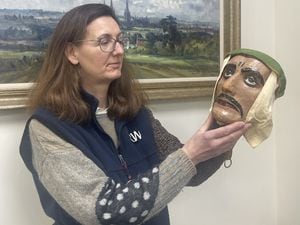Cradley Heath WW2 veteran's remarkable story of survival used by archaeologists
He took part in the epic Battle of Singapore and suffered near-starvation on a Japanese prisoner-of-war camp before being sent to work on the infamous Thai-Burma 'death' railway.
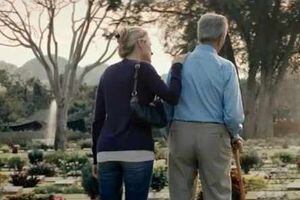
Now Jack Jennings' remarkable story of survival is helping battlefield archaeologists working on a Second World War project in the former British colony.
The 95-year-old retired joiner from Cradley Heath has astonishing recall of the events more than 70 years ago which he recently committed to print in an online memoir.
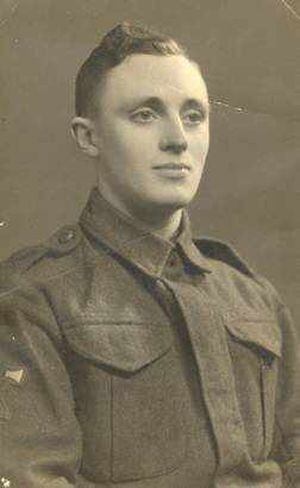
He was part of the spirited defence of Adam Park, a strategically situated housing estate in the centre of the island, as part of the Cambridgeshires, a novice British infantry battalion which included many Black Country men.
They held their ground for four gruelling days until finally ordered by their commanders to lay down their arms.
It was the Allieds' last stand before the fall of Singapore, an event described by Prime Minister Winston Churchill as the 'worst disaster and largest capitulation in British history.'
Of the 100,000 men taken prisoner, 9,000 died building the Burma-Thailand railway.
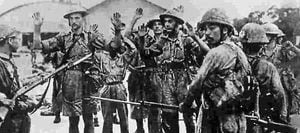
Jack, who was just 20 when he left his home in Church Street, Old Hill to answer the call of duty, was among 500 soldiers who were rounded up at Adam Park and taken to Changi prisoner of war camp, worn out and starving, where they were fed little more than a bowl of rice a day.
He said: "The change in diet affected many men, some with sores or upset stomachs, and others showed signs of vitamin deficiency. The result was a great struggle for survival and some couldn't make it. There were three or four funerals every day.
"After a while permission was given to make a stage and put on shows. Musicians found instruments, or made them. I was sorry I'd thrown my harmonica into the Red Sea on the journey from England after it stopped working through over-use. Instead I helped to make the props."
Jack spent his 21st birthday at Changi but it was a day like any other, he says, filled with boredom and the torment of lice and mosquitoes.
He was later among those moved to work on the Thai-Burma railway, featured in the classic film The Bridge Over The River Kwai, the line devised by Japan's Imperial Army at the height of the war to transport troops and supplies from Bangkok to Burma.
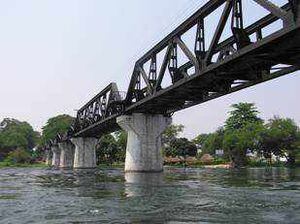
The line was completed in just a year but it cost the lives of around 13,000 POWs and 100,000 native labourers. One man died for every sleeper laid.
"You just got on with it. I never gave up hope. I made up my mind to forget about home.
"They were brutal in the camp but not as bad as when you were working on the railway. They beat you up for the slightest thing. If you weren't working like they thought you should you would get a stick or the butt of a rifle. But I had to keep going."
An outbreak of cholera made a bad situation even worse.
Jack says: "They were carrying 15 bodies a day to be burnt. I had a friend who slept next to me and I woke up one morning and he was dead.

"He just gave up. Everybody had malaria and skin diseases. I also had dysentery and an ulcer on my leg."
Rice and a teaspoon of sugar with watery gruel was all they ate each day. Yet despite the hardships, the men kept their spirits up and made his own entertainment.
As well as helping to put on concerts, Jack used his carpentry skills to make a chess set.
"There were offcuts from the boards they made the beds with. I managed to carve two pawns a day. We played a lot of games on it and I couldn't leave it behind.
"I took it all the way home, it reminds me of those days."
Jack took part in daily bamboo-cutting sorties for the cookhouse fuel, which meant long treks out of the camp. Some of the men were bare-footed by this time, their boots having fallen apart. Jack's were not that good and for a time he, too, was without footwear until he made himself a pair of wooden sandals, pieces of wood cut to the shape of the foot with a strap nailed across.
This protection was important as bamboo splinters, which were scattered everywhere, caused cuts and scratches which could become infected.
But Jack failed to escape injury, sustaining a cut on the back of his left leg from a bamboo splinter which led to an ulcer developing.
In August 1943 he was sent for treatment to the camp hospital where he was to spend the next nine months. He remembers it as a 'long, depressing experience' in unfamiliar surroundings away from his friends, watching men die around him.
He said: "Occasionally a little bit of cheerful news came to us of the progress in some places of the Allied battles with the Germans and the Nips. Sometimes we heard the drone of Allied planes overhead, and the dull thud of bombs dropping somewhere. Homemade draughts and cards helped to pass the time away."
Jack's ulcer grew to the size of a pear and his treatment was upgraded to a mild antiseptic.This seemed to bear some results and he was recommended for a skin graft.
The operating table was made from bamboo and there was no anaesthetic to knock him out. Jack watched as small sections of the skin from his thigh was cut and lifted with tweezers before being transferred to the ulcer. This was repeated two dozen times.
After several more weeks, he was deemed fit to return to work and continued to toil on the railway in horrific conditions until the end of the war.
Weighing just six stone he returned to Old Hill in October 1945 suffering from malaria but was nursed back to health by his mother Ethel.
He said: "The whole street was decorated with flags, everyone came out to welcome me back, it was wonderful. My mother said she'd made me my favourite dish - rice pudding - and couldn't understand why everyone laughed."
Jack married his fiance Lilian two months later and the couple eventually settled in Wollaston, Stourbridge with their daughters, Carol and Hazel. Since he was widowed 12 years ago, the great-grandfather-of-two has moved to Torquay to be near Hazel.
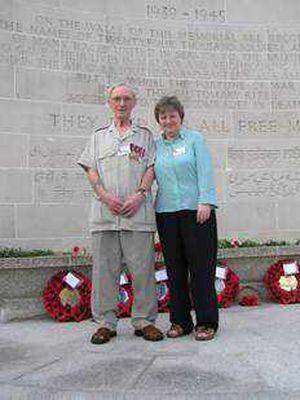
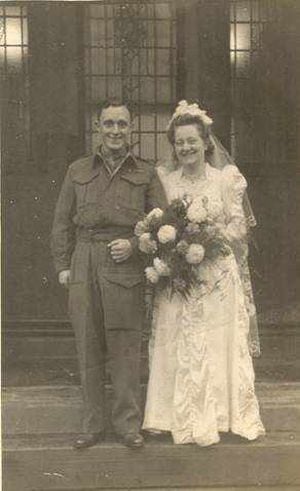
He still drives - 'like Sterling Moss' says Carol - taking a trip to the beach every day where he walks from one end of the promenade to the other and back again before treating himself to an ice-cream.
His belongings include a bedroom suite he made during a cabinet-making course at Dudley College before the war and the chess set he carved while at the Changi prison camp.
Two years ago Jack's story inspired a moving television advertisement by Hollywood director John Hillcoat to promote the National Lottery's good causes fund.
The Lottery paid for Jack to return to both Singapore and Thailand with his granddaughter, an emotional journey which brought memories flooding back into focus. But rather than feeling anger and resentment for what he had suffered, he found that he enjoyed himself immensely.
Jack was one of 51,000 people who made commemorative trips through the fund's Heroes Return scheme. An actor played him in the ad.
He said: "I was able to find and visit the graves of former comrades. We also visited the British Embassy in Bangkok and met some notable people. It was important for me to go back to Singapore and Thailand and remember all the men that didn't come back.
"I was surprised and relieved. All my old dreams faded away, it's now a pleasant place. I was very grateful for the chance to return.
"It looks lovely now. There are palm trees by the water and the graves are really looked after.
"The advert was very good, showing what the jungle was like and how I felt visiting the graves of friends many years later. It showed how grim the conditions for prisoners of war were in the heat, working so hard with little food."
His visit was the third time he has been back to Chungkai, which is 80 miles north of Thailand's capital, Bangkok.
"I was apprehensive," he said. "But all the bad thoughts of those terrible times faded completely away.
"It was beautiful. I even went on the railway I helped build."
He is now helping fellow Midlander Jon Cooper with his archaeological work at Adam Park.
Mr Cooper, a 49-year-old former serviceman, has been investigating the site as part of his PhD studies. He is currently living in Singapore with his family and gained permission from the Singapore government to dig up the Adam Park site for the first time since the fighting ended.
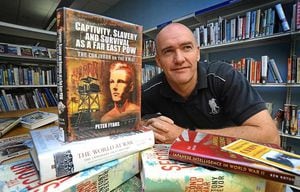
Whist looking into the history of the area, he was thrilled to come across Jack's e-book memoir, Prisoner Without A Crime, now also available in paperback from Amazon.
He was also interested to read that Jack's Suffolk battalion was sent for training to his home town of Cannock before sailing for Singapore.
While much has been written about the part of the Cannock Chase camps in training troops for the First World War, little is known of their part in the 1939-45 conflict.
While Jack is helping with his research into both the Cannock camp and the Far East battle site, Mr Cooper has set himself a special challenge by way of a thank you.
In his book Jack told of buying a pocket watch at a shop in Cannock and having to leave it there, after taking it back for repairs, when the battalion was suddenly mobilised.
Now Mr Cooper has tasked himself with finding Jack's pocket watch. He is appealing to Express & Star readers for information about both the Cannock Chase camps during the Second World War, and any details about watch shops in Cannock at that period.
He said: "Jack's an incredible man. It's a long shot but it would be wonderful to reunite him with the pocket watch he never got a chance to collect."
Anyone who can help is asked to contact Mr Cooper at: jonalicooper@gmail.com



